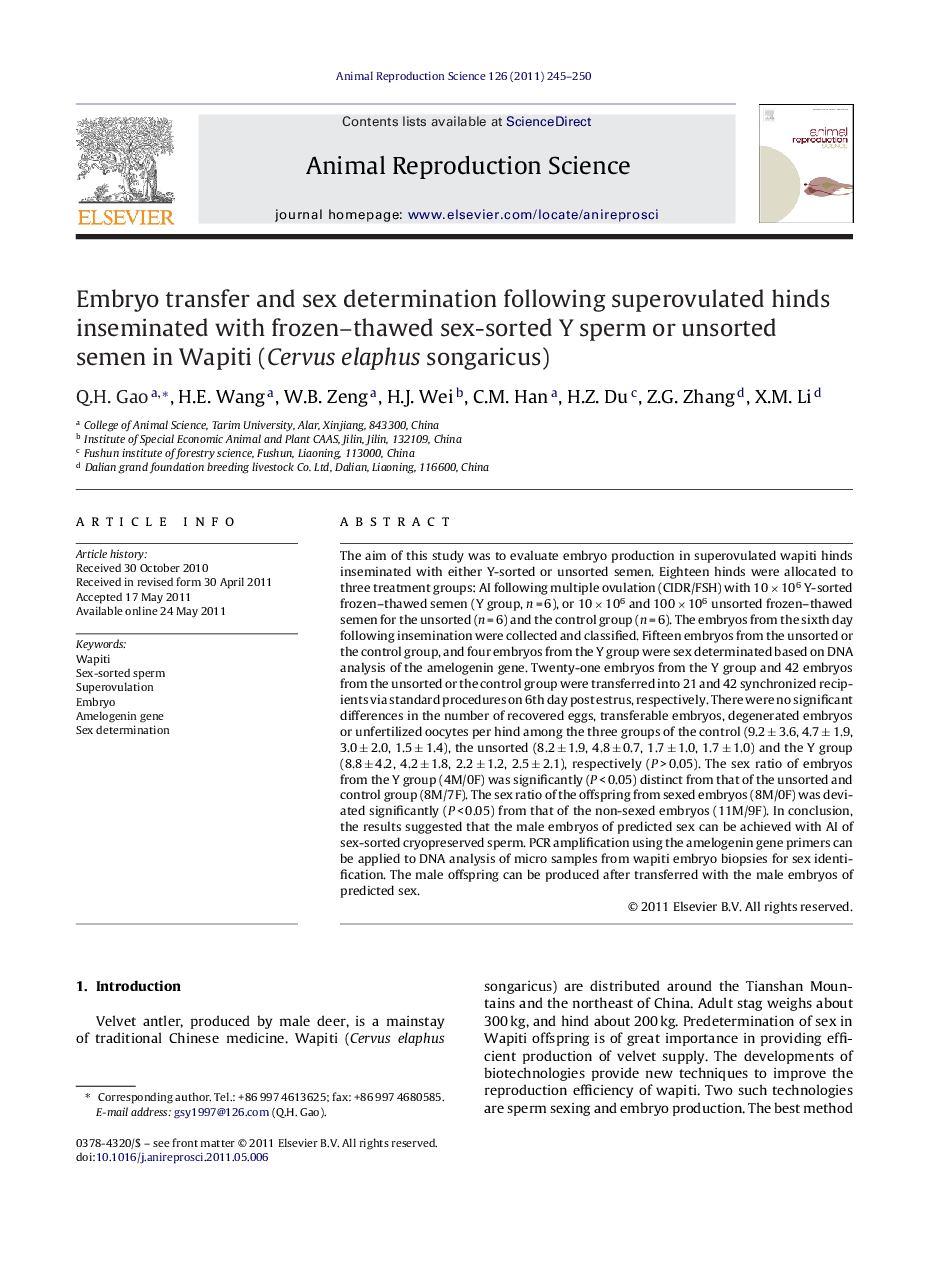| کد مقاله | کد نشریه | سال انتشار | مقاله انگلیسی | نسخه تمام متن |
|---|---|---|---|---|
| 2073335 | 1544771 | 2011 | 6 صفحه PDF | دانلود رایگان |

The aim of this study was to evaluate embryo production in superovulated wapiti hinds inseminated with either Y-sorted or unsorted semen. Eighteen hinds were allocated to three treatment groups: AI following multiple ovulation (CIDR/FSH) with 10 × 106 Y-sorted frozen–thawed semen (Y group, n = 6), or 10 × 106 and 100 × 106 unsorted frozen–thawed semen for the unsorted (n = 6) and the control group (n = 6). The embryos from the sixth day following insemination were collected and classified. Fifteen embryos from the unsorted or the control group, and four embryos from the Y group were sex determinated based on DNA analysis of the amelogenin gene. Twenty-one embryos from the Y group and 42 embryos from the unsorted or the control group were transferred into 21 and 42 synchronized recipients via standard procedures on 6th day post estrus, respectively. There were no significant differences in the number of recovered eggs, transferable embryos, degenerated embryos or unfertilized oocytes per hind among the three groups of the control (9.2 ± 3.6, 4.7 ± 1.9, 3.0 ± 2.0, 1.5 ± 1.4), the unsorted (8.2 ± 1.9, 4.8 ± 0.7, 1.7 ± 1.0, 1.7 ± 1.0) and the Y group (8.8 ± 4.2, 4.2 ± 1.8, 2.2 ± 1.2, 2.5 ± 2.1), respectively (P > 0.05). The sex ratio of embryos from the Y group (4M/0F) was significantly (P < 0.05) distinct from that of the unsorted and control group (8M/7F). The sex ratio of the offspring from sexed embryos (8M/0F) was deviated significantly (P < 0.05) from that of the non-sexed embryos (11M/9F). In conclusion, the results suggested that the male embryos of predicted sex can be achieved with AI of sex-sorted cryopreserved sperm. PCR amplification using the amelogenin gene primers can be applied to DNA analysis of micro samples from wapiti embryo biopsies for sex identification. The male offspring can be produced after transferred with the male embryos of predicted sex.
Journal: Animal Reproduction Science - Volume 126, Issues 3–4, July 2011, Pages 245–250